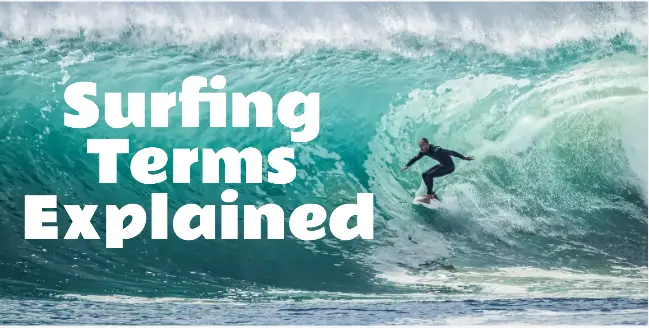Surfing Terms Explained

Every sport has its own unique vocabulary, specific terms, jargon and slang. However, surfing is in a league of its own. To someone who is unfamiliar with the said sport, surf lingo can seem like an entirely different language. If you have ever had the chance or overheard two seasoned surfers talk about a swell forecast, you will know exactly what we are talking about.
To be able to speak like a surfer, you need to know the language of surfing. Quite honestly, speaking like a surfer is easier than you might think. All it requires is a quick glance at the list below to grasp the basics of surfing terms and dig right into that conversation. Hereafter, you will finally be able to understand what the competitors are saying in those WSL post-heat interviews, instead of just sitting there and nodding your head.
To help you get started, we have selected some common and useful surfing terms so that you fit right in at the beach next time you go for a ride on the waves.
Wipeout
Wipeout is the act of falling from your surfboard when riding a wave. Novices and beginners who want to speak like a surfer will find themselves very well acquainted with this word.
Akaw
Akaw, in surfing, means awesome, cool.
Amped
A term used by surfers to describe a feeling of excitement or being pumped up.
Bailing
In surfing, bailing means jumping off your board into the water in order to avoid a bad encounter.
Tombstoning
It is the point at which the surfer is cleared out and sinking underneath the surface and their surfboard is weaving here and there connected with them through a leash.
Leggie
Leggie is the leg rope, lease or the cord that ties your ankle to the tail of the surfboard so it is not washed away into the ocean when you wipeout. It is made of lightweight urethane and is available in varying sizes. The thicker Leggies are for big waves and thinner ones are for the small waves.
This is the area of the wave that is closest to the curl or whitewash. The Pocket is where you should surf if you want the most speed. It is the steepest part of a wave and can also be called the energy zone.
Thruster
A thruster is a three-finned surfboard, invented back in 1980 by an Australian surfer, named Simon Anderson. It has three equally sized fins built on the bottom of the surfboard. Nowadays it is the most popular fin design for modern surfboards.
Read more about Surfing
